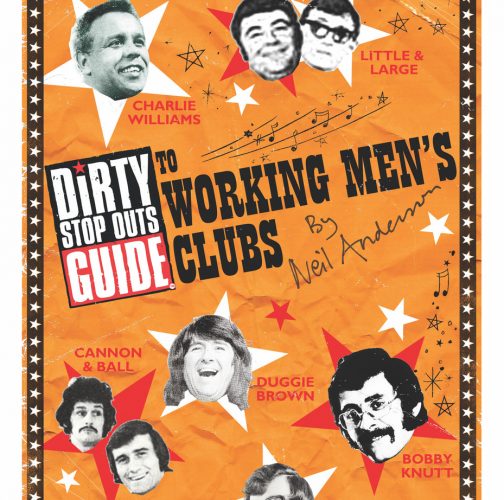By Neil Anderson
ACM RETRO
84 pages, £13.95
Reviewed by Joe Coventry
Little could the Reverend Henry Solly have known what he was getting into when he opened the first Working Men’s Club in 1862. The intent was to provide a place where men could congregate and discuss, read or get educated outside of the public house alternative. The three gentlemanly tenets of no swearing, no smoking and no gambling would be turned on their heads spectacularly a century or so later when at its zenith millions of men and sometimes women, packed into over 4,000 licenced clubs every week to drink cheap beer in packed, smoke filled rooms; where not just the air was turned blue by tobacco and Bingo was Queen.
How did this transition of Biblical proportions come to pass?
Well, by the 1970’s everyone was in on the act (literally!) from local ‘turns’ moonlighting from the day job to the burgeoning upper echelons of the entertainment industry. Many honed their skills night after night, be they novelty acts, singers, dancers, groups or comedians. If the Club Concert Sec had you down in his book you were on, and maybe not just in his venue but also in the bevvy of clubs dotted around the town later that night.
The Concert Sec was second only to the Chairman; the Committee members might be steelworkers, labourers or miners by day, but they controlled with impunity inside their club domain. Stewards had control of access, and it has to be said the rules were stacked against women entering not only the front door but also the ‘hallowed’ confines inside the building – unless accompanied by a husband or male relative.
Not acceptable now, but in those non-politically correct days people just got on with it. That is if you wanted to see the likes of :
Frankie Vaughn, Les Dawson, Engelbert Humperdinck, Little and Large, Bob Monkhouse, Marti Caine, Cannon and Ball, Frank Carson, Lulu, Charlie Williams, or Bobby Knutt, (to whom the book is dedicated), for a pittance.
No matter how big the turns (Tanya the Elephant guested on one club from the London Palladium), they had to play backed by the resident band, were not guaranteed a warm reception from hard nosed audiences, and could be ‘paid off’ if deemed not good enough. Worse, they could lose their allotted time slot all together if the shout of “Pies have arrived!” came over the compere’s mic or the sacrosanct Bingo Caller still held sway on the floor.
There were also the kids charabanc days out when the whole community decamped to the seaside to escape the rigours of grimy terraces and boredom. Times were hard but the strength of community spirit got people through and the Working Men’s Club was the glue that held it all together.
Anderson’s A5 book is part narrative, part lots of black and white photos and flyers showing the turns or evocative grainy images of the club environments they performed in. Yorkshire’s clubs gets most of the attention in this volume but there are editions for venues near you.
It is though in the anecdotes and reminiscences of those who took part in the compiling of the book that the kaleidoscopic colours, smells and noises of the period leap off the page.
It’s a niche culture that is recorded here and while clubland has been transformed, there can be no return to this heyday due to the demise of heavy industry and the introduction of the breath test. But if you want to bring Phoenix Nights memories back for yourself then get someone to buy this book for you for Christmas.
